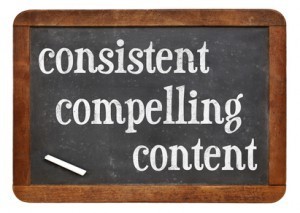Ruth Ford Elward's Blog
January 27, 2016
Press Kits
For freely offered writing Resources go to RuthFordElward.com
PRESS KITS
There seems to be some confusion as to what constitutes a ‘media kit’ and a ‘press kit’. Aren’t they the same thing?
While some of the components ARE the same, where they differ is in the targeted audience. Neither kit is geared towards your readership, but rather to book stores, commercial businesses, or the media.
You are, in business terms, seeking investors in the broad sense of the term.
The Press Kit (bookstores, speaking events, conferences, etc…) should be available in two formats: digital (online and downloadable as a PDF file) and an in-print version. Most local bookstores, events, and writer’s conferences still prefer the hardcopy to be mailed to them months in advance of the proposed event.
Make certain that the hardcopy is printed on NICE paper and placed into a presentation folder, or nice mailing envelope. Don’t fold or bend anything.
When addressing the mailer, make sure to make it look professional with a printed label and return address.

A Press Kit is a collection of pertinent information about the book, the author, and any events in conjunction with the book. It is designed to give the media a prompt covering of what you are promoting, an idea of the “who, what and where” of a new book or upcoming event.
A great press kit should include the following:
• Professional bio with contact information (in fact…contact information in the footer of EACH page). Make sure the bio is written in third person.
• GREAT headshot (picture) of you
• Information about the book, including a picture of the cover, the publication information (like the ISBN, publisher, date published, and full title). Also include reviews, endorsements and press releases.
• For events and conferences, include a list of potential topics and other conferences where you’ve presented.
• A full page dedicated to explaining WHY your book is different from others that are in the same genre, and why readers are going to find a ‘rare gem’ in your book.
If you are having trouble establishing ‘how’ your book is different from the competition, consider the following questions:
• Does your book shed light on some human perspective that doesn’t always get a lot of attention?
• Do you have specific experience or expertise that allows for a more in-depth look at something?
• Do you live a unique lifestyle that is different from most authors?
• Does your book take place within a group, region, special interest sector that people would want to know more about?
January 20, 2016
Isn’t Technology Lovely?
For freely offered writing Resources go to RuthFordElward.com
ISN’T TECHNOLOGY LOVELY?
A great time saver is to write all of your blogs for the month, then create a schedule via your blogging platform, to release them slowly each week. In other words, write 10 blogs, then specify the date and time that you want the program to publish it to the site.
Automation can save the day for a busy writer who is also trying to keep all of the plates spinning.
In addition, placing your Twitter handle at the bottom along with your tagline is a quick way of suggesting (without coming out and asking for it) that your reader tweet about the blog they’ve just read.

To Blog or Not to Blog
That is the question, is it not?
In general, if you are going to be able to keep up with it…then go for it. If not, then opt for simply commenting on other blog posts out there, using your own name.
This will also establish your name and brand. In the end, however, developing a digital presence on the web has to include some sort of interaction on your part.
In the digital age, no writer can be an island.
January 13, 2016
Best Blog Practice
For freely offered writing Resources go to RuthFordElward.com
BEST BLOG PRACTICE
It seems odd, but many authors’ blogs don’t talk anywhere on the page about the book! If you have books for sale…say so. Offer quotes, links, samples, reviews, even discounts.
While your website is the main source of your information, it is foolish not to mention the books where interested readers gather. Keep in mind that the average surfer wants things to be easy.
Take a hint from Amazon.com…..one click purchases? Recommendations? Make it easy to make a purchase.
The best book blogs are singular in their existence. In other words, many authors think they need to have multiple blogs. The problem with that is one or the other is going to be neglected.
Unless you are outsourcing the material to someone else to maintain, stick with just ONE blog and do it well.

Good Blogs Gone Bad
Flashy ads, loud music, scrolling words….all a major turn off to the average consumer. Don’t do it. Using loud garish colors and flash graphics make it difficult for the reader to remain on the page for any length of time.
Also keep in mind that many in your readership will be over the forty mark and having light fonts on dark backgrounds can be difficult to read. Keeping things simple is the best rule of thumb.
I’ve also seen perfectly nice blogs that were so saturated with gizmos and widgets that they loaded slowly. If it doesn’t load in 14 seconds or less, you’ve lost people.
And, while videos, graphics, bells and whistles are interesting…you’re a writer. Showcase THAT. Keep in mind that your blog is also ranked based on its load time as well as its number of unique visitors.
January 6, 2016
Blogs and Reviewers
For freely offered writing Resources go to RuthFordElward.com
BLOGS and REVIEWERS
Many reviewers, agents, publishers, and even readers, are more likely to take you seriously when you have an established web presence. A blog is a quick way to make that happen faster. You can’t simply put up an author page on a distributor’s site and hope that will attract readers. You have to be proactive in this day and age.
Google your name. Go on…take a minute to do an ‘ego surf’. How many pages deep is your name buried, if it shows up at all? Exactly.
If you will put out 20-25 blogs a month, then after that month do the same search, watch the magic happen.
So, blogging does work, not necessarily as a direct sales tool, but it is a major component in building your platform.
Not All Blogs Are Created Equal
There are some well-meaning blogs out there, more often than not though the capital blunders include assuming the pseudonym of one of your characters, pretending to be a grumpy reviewer, or adopting a cutesy.
Unless you are publishing your book under those names, then the strongest case EVER is to be made for blogging as yourself.
Another faux pas of the blogging variety is to forego placing something at the end of a blog post particularly when the blog post is not on your own website. A tagline that says who you are or what you’ve written with a link to either your website, a full page bio or to where the book can be purchased is always a good idea.
When possible have what’s called an Author’s Box below your blog post when you’ve added a post on your Facebook page or Google Plus profile page. This author box should have a brief but concise bio about you with a GOOD photo again linking the picture or your name in the box to either your full page bio or your website.
This is not the spot to simply cut and paste from your resume or cover letter. These suggestions are second only to actually having your name prominently displayed on the home page of your website….better yet in the header. Think of it this way….your name is your branding.
Another mistake is to not provide a way to contact you. Most bloggers don’t think about it, or figure it isn’t necessary. IT. IS. NECESSARY.
What if someone is very interested in commenting on what you wrote, or thinks you would be a wonderful speaker at their next event?
Make it EASY to contact you, have these links set up, because if they have to back out of the blog and try and find your website to contact you…..most likely they won’t.
December 30, 2015
Blog Branding
For freely offered writing Resources go to RuthFordElward.com
BLOG BRANDING
Blogs allow you to brand yourself like no other medium out there. This is where you can establish your niche within your chosen genre. Does it take time to build brand recognition? Yes.
But, the upside to that is all of the things you need to do to develop that recognition are free. Each blog allows you the opportunity to connect with readers, promote events, new releases, keep existing books in front of your readers, hold contests, and offer samplings.
With blogs you can hold discussions and use these discussions as a testing ground. Blogs are, in many ways, are a living, breathing resume and business card.
Blogs don’t exist in a vacuum, or they shouldn’t. Linking them to your social media output is key to creating name recognition and bringing others a ‘sample’ of yourself in a shorter version.
Offer yourself as a guest blogger to other blog owners, or go to someone’s popular website and contact them directly from there. You are, in essence, building your digital reputation when you do so.
Blog Laboratory
Ever wish you could test drive some new material or ideas that you are thinking of pursuing? Your blog is a great way to accomplish this task.
Many worry that the topic or hot new idea will be stolen, but for the most part, this is a myth. Many great books that have come out in the last few years were created FIRST on a blog spot.
By simply writing a lot about one subject, and then, realizing after a year or more, you have 50,000 words or so and a fledgling book on your hands. Much easier to commit to 500 words every day, than staring at a blank screen for hours because you have committed to finishing a chapter that day.
Plus, you have the added bonus of having instant feedback and you can adjust or refocus your attention on the areas of most interest or response from your readership.
December 23, 2015
Blog-a-Licious
For freely offered writing Resources go to RuthFordElward.com
BLOG-A-LICIOUS
We’ve talked about the four pillars; actually you can say there is another, well maybe.
Blogs by themselves can do nothing for you. They are just one small part of the overall digital marketing plan. Focusing on this detail can make your life a little easier. The entire purpose of a blog is to draw people to your website.
Now, having said that, can a blog establish you as an expert in some area? Yes.
Can it position your website high in the search engine rankings? Yes.
Can it allow the reader to get to know ‘you’ aside from reading your book? Yes.
All of these are invaluable secondary benefits, but the overall reason to do a blog is to help people find your website, and therefore, your book.
Blogs, along with other digital outreach strategies, are the foundation of an online presence. They allow you to stay connected to your readers, 24/7 from anywhere in the world. And, blogging can allow you to test how your content is resonating with your readership, as well as networking and bringing other people into your sphere of influence.

Blog Often
There are conflicting views as to how often one should put up a blog, but the key to all of it is consistency. Keep a regular schedule when it comes to uploading new content so that your readership will come to expect and TRUST that you will be communicating with them again.
Blogs also give you a way to work in a link or two back to your website, or other content on your website, which will increase your relevancy when someone is surfing on a topic that is related to what you’ve written about. And the flexibility of blogs, to allow for the incorporation of slide presentations, videos, webinars, audio recordings, etc… can really make your website a dynamic place where people like to go.
December 16, 2015
The Four Pillars of Social Media – Part 2 of 2
For freely offered writing Resources go to RuthFordElward.com
The FOUR PILLARS of SOCIAL MEDIA – PART 2 OF 2
Pillar Three: Join groups and forums.
Talk. Talk. And Talk some more. This is just like going to a cocktail party and mixing/mingling with other people. Don’t be ‘that guy’ that immediately walks up to someone (even in the cyber world) and push your book in their face saying ‘Buy This!’ That’s rude even in the virtual world.
The best connections are those that you truly enjoy. LinkedIn groups are excellent for this, as are many of the Yahoo forums and online writer’s groups. Getting to know people almost always translates into sales. This is the most important reason why starting your platform well before your book is finished becomes critical.
It takes time to develop relationships and for people to get to know you even in cyber space. These are the people who will want to help you when it comes time for your book release. They can recommend your book to others and leave reviews, so take the time and develop these relationships. This pillar costs you nothing but your time.
Pillar Four: SEO.
It’s all well and good to have a website, but if no one can find you, then what good is it doing you?
SEO (search engine optimization) ranks pages on the internet based on their content and the relevance to that content in comparison to various keyword searches. This is where the blogs and the content on your website (including the words placed on your pages) will decide where you fall on the SEO pecking order.
Content is a KEY element to this, but you can also manually submit your site to numerous search engines on your own. They will eventually index you. Some will charge a fee to move you to the front of the line, but if you are patient, then there’s no need to pay for placement.
Many authors simply out-source all these pillars or a couple of them to companies or individuals that specialize in these areas.
December 9, 2015
The Four Pillars of Social Media – Part 1 of 2
For freely offered writing Resources go to RuthFordElward.com
The FOUR PILLARS of SOCIAL MEDIA – PART 1 OF 2
In order to have a successful online media campaign, which relies heavily on social media, there are four aspects that must be updated constantly. Like watering flowers on the back porch, you can skip a day and be ‘okay’. But skip a week and watch it all wilt away to nothing.
Pillar One: Social Media sites.
Experts state that having and maintaining at least 3 is realistic for most people. Twitter, Facebook, and then there is Instagram, YouTube, Google Plus, Pinterest and so many more.
Make sure the social media you choose is what you are likely to post something on regularly. On the day you do your posting, a good rule of thumb is to post in the morning, check back in at the afternoon, then in the evening respond to any comments or questions.
You can post inspirational pictures with sayings, short attention grabbing lines from your book, thought provoking questions….be as creative as your demographic can stand. This costs you nothing but your time and dedication.
Pillar Two: Advertising.
Many are intimidated by Google Adwords or Facebook ads, but they work…and work well, not just for a physical product but for books. Just like the ‘suggested reads’ feature on Amazon, the Google Adwords campaigns make certain that your ad shows up on the search pages of those who are looking for something related to your book’s topic or genre. This maximizes the odds that a person will click on your website and consider purchasing.
Google Adwords is VERY user friendly and they have support staff that can walk you through the process. You can set limits and budgets. Both Facebook and Google Adwords are based on PPC (pay per click) logistics. You can read more about this by visiting: http://www.google.com/adwords/start or http://www.socialadstool.com/facebook...
December 2, 2015
Author Website Basics
For freely offered writing Resources go to RuthFordElward.com
AUTHOR WEBSITE BASICS
As you layout what you want on your website, the following pages should be considered. These pages should have as their goal to engage the public, encourage them to make a purchase, or take some action.
The opening page or home page is one of the most important pages on your site. This should have a picture of your book with a paragraph or two giving a book description. Depending on the space that you have, you can include reviews or show other books you’ve written.
Place a Buy Now button immediately under the book. There should also be a link to where the reader can ‘read more’ about the book or read ‘behind the scenes’ information or something about the author.
Author’s bio page or the ‘About the Author’ page or the ‘About Me’ page. At any rate…it is the page where you showcase yourself. If you don’t have a great picture of yourself…GET ONE. Nothing is worse than a poorly lit, out of focus picture that your Aunt Sue took while you were on vacation three years ago.
Be professional and resist putting up pictures that your particular readership wouldn’t appreciate or would be turned off by. Links to social media should appear on all of your pages. This way a reader can express their liking for your book or your web site page to the world or even to use them as a way of keeping in touch with what you’re doing.
Reviews/Media Page, this page needs to have a listing of reviews from various places. A good rule of thumb is to have reviews from all over the US (and abroad if possible). This shows a wide demographic interest in your work. Additionally, anyone who is interested in possibly interviewing you or having you as a featured speaker will come to this page to see what others have thought about you and to access your press kit.
Events Page, this is where you will list places or events that you will be appearing or attending in some fashion. These things may include, an on line interview or a hang out in Google Plus or a book signing or attending a conference. This page should not be made viewable until you actually have some events scheduled. Nothing is worse than viewing an events page only to find out that the author isn’t going anywhere or doing anything! Other events could include anything from workshops, to podcasts, to Twitter parties.
Blog, there are some that may say that a blog is not a basic requirement for an author’s website. However, the benefits outweigh the burden of keeping one going. If writing blog posts is not your thing, and you don’t want to spend the time creating them, this is one of the most out-sourceable projects you can do. Many fine writers exist who can create 25-50 articles on topics pertaining to anything, for as little as $5/article. Worth it if you want to save yourself time. Plan to post and update the blog content regularly. This will position you higher in the search engines, on the internet, content is King. 
Contact Page. This seems like a no-brainer, but in reality, new authors leave this part out, put it in there. It is a simple page to create with just a few sentences explaining how people can contact you. Do yourself a favor and create an email address that doesn’t have the ‘gmail’, ‘hotmail’ or ‘yahoo’ extension. It is more professional to email someone at author@author.com
November 25, 2015
Important Components of Successful Author Websites
For freely offered writing Resources go to RuthFordElward.com
IMPORTANT COMPONENTS OF SUCCESSFUL AUTHOR WEBSITES
Author websites are specific and goal driven. Their sole purpose is to offer readily digestible information about a topic that the surfer is interested in. That information can take the form of your book, your expertise, your friendship, or some service you are offering. In any of these cases, the underlying principle is that of communication. The best author websites include several components that have helped to make the author visible and successful in their goals.
• Great author websites keep their websites UPDATED and CURRENT.
Nothing is worse than clicking onto an author’s website only to find that the last post or information on the site is a couple of years old. If you are the one updating the information, make sure that the blog content and the other topics that you offer on your website are not dated, or outdated. Opt for topics that have a longer shelf life.
• Successful websites KNOW their intended audience.
While this sounds trite, and often repeated, it bears saying again, and again, and again. IN particular with a website this is important because you will need to determine what your audience enjoys doing and learning. A website devoted to information about aging and Alzheimer’s would offer different components as compared to someone whose book is a young adult teen fiction book.
What is your audience’s goal when they come to your website?
What sort of tech skills do they bring to the cyber-table?
Do they enjoy interactive websites?
Or do they like to breeze in, breeze out, and be done with it?
How much time does your demographic actually prefer to spend on a website?

• Great websites limit the visual saturation. Pictures are lovely…but they also take a LONG time to load on a page, or to update. Using compressed files and web enabled files can help make sure that the pictures you do use are easy to load and don’t freeze up even the slowest of browsers.
• Embrace Social Media. The caveat here is to actually USE it. If you know that you are not likely to update your Facebook, Google Plus or any other social media regularly, then consider outsourcing it to someone who will enjoy doing it.
That being said, if time and budget don’t allow for outsourcing, then consider ONLY using ONE social media option. Better to have one done well, than several that go nowhere.
• Great websites are EASY to use! No matter how ‘simple’ your website seems to you, you must assume that there are people out there that aren’t as ‘savvy’ as you are. Remove all obstacles to usability…which can include resisting the urge to throw background music on the site.
A new author may believe that they need to make their website ‘unique’ and ‘different’ from other websites. This is a huge myth. Readers expect a certain level of information to be readily accessible on your site and if they don’t find it, or see it, or experience it, they will not deem it worth their time or trouble….and they will go away never to be heard from again.
• Be Clear about your intentions. You’re there to sell your book….right? So why would the cover of your book NOT be on your first page?
Don’t fall into the ‘welcome page’ trap. We’ve all seen them….Welcome to my website letters on the first page. Don’t do it. The reader already knows you are happy they’ve landed on your site. Don’t waste precious cyberspace on this. Rather, put a picture of your book, and some interesting information that is plainly there for them to know what your book is about.
• Great websites actually offer a way to purchase the book! If that sounds strange, you’d be surprised at how many author websites don’t actually offer a ‘purchase’ button somewhere near their book’s graphic or on the book’s page.
• The best websites offer communication options. You want to make it easy and even compelling to contact you via email or comment posts. The whole point of the website is to market YOU and your book. Therefore, you want people to get in touch with you and to ask for additional information about your book and speaking engagements.
• The best websites think about the bigger picture. When you buy a home, you buy it with the idea of having the space to expand if needed. This is the same concept where websites are concerned. Make sure that the software or pages that you purchase have enough space for you to offer additional books when they come along. Keeping your ‘brand’ consistent throughout all of your books is important.
• Awesome websites cover the basics effortlessly. In other words, attention to grammar, punctuation, forms and formatting must be triple checked. Misspelled words and poor grammar will make a poor impression on a first time visitor.
If looking for a website designer company that does a nice job for a site, look into Outbox Online.
Ruth Ford Elward's Blog
- Ruth Ford Elward's profile
- 9 followers



